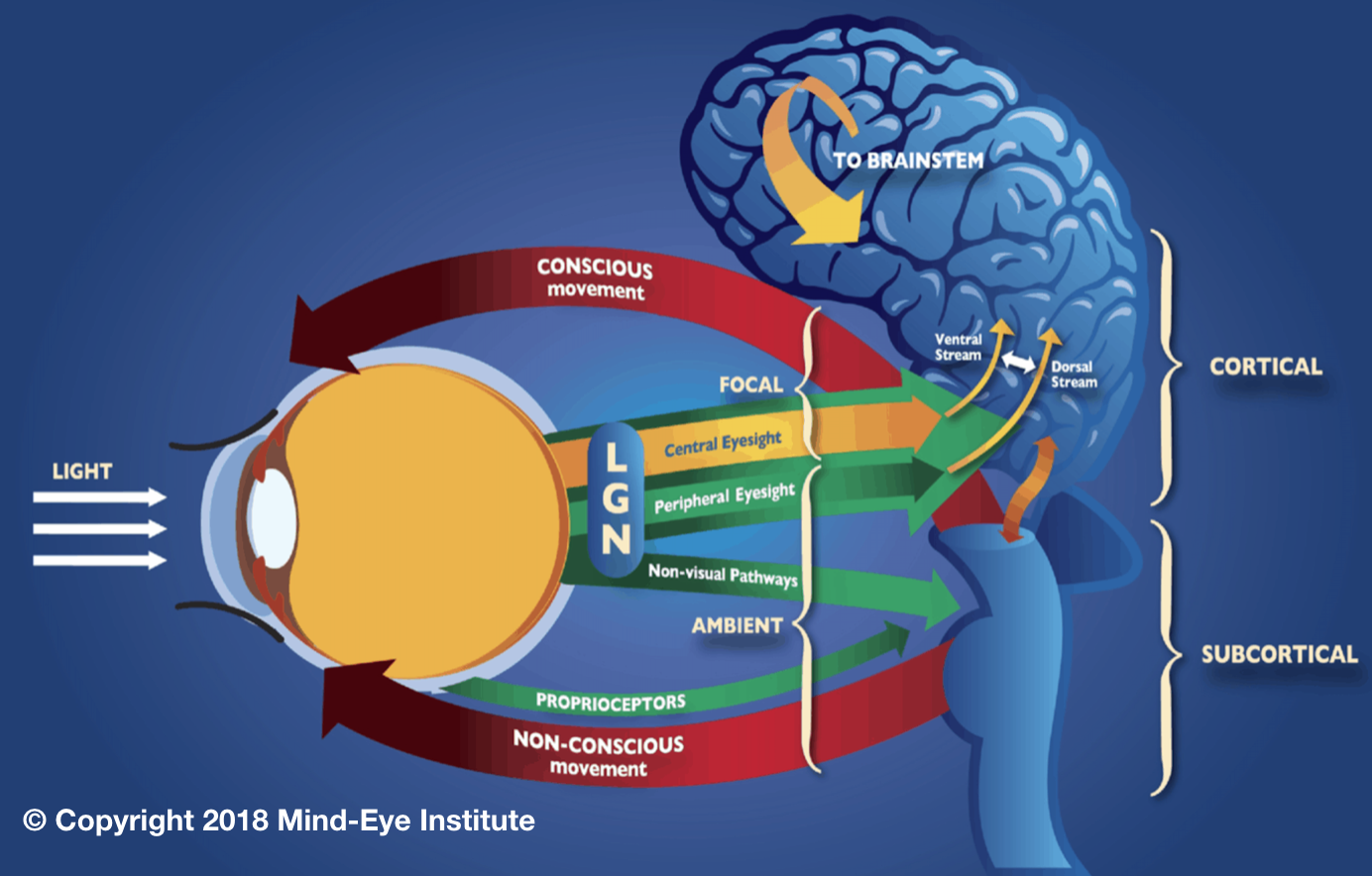ABSTRACT:
The retina is a part of brain tissue concurrently receiving signals from extrinsic and intrinsic sources. Stimulation of the 126 million receptors that react to light activates its five main sections. Filtering of those 126 million entering signals, results in only 1.2 million exiting signals. Depending on which receptors are activated, the exiting information differs, inducing various reactions and responses in brain chemistry and body functions.
An emerging subset of optometrists use retinal tolerance to assess and treat neurological function by influencing signaling in both autonomic and central nervous systems. Their customized prescriptions are designed for alteration of biochemical and neurological brain activity, rather than central eyesight on a non-moving target. This case reports two patients who had fainting spells due to positional orthostatic tachycardia syndrome (POTS) each received individualized eyeglasses to synchronize imbalanced incoming visual circuitry. Each patient stopped fainting after receiving the new prescriptions.
Retinal circuitry’s effect on body functions suggests that retinal stress tolerance might be a clinical indicator of stability of the balance between central and autonomic nervous system interaction. This furthers the position of the optometric profession to be beneficial as part of a multidisciplinary team.
Classic optometry is thought of as simply sharpening central eyesight and checking for eye health problems. However, the retina is involved with modulation of limbic system and brainstem functions also. Tools include various lenses, prisms and filters, which when combined to balance incoming signals, decrease the stress level of the patients and improve their ability to handle environmental changes.
Neuro-optometric prescriptions designed for brain function, rather than eyesight, might be a next step in management of autonomic function disorders. Each of the two patients described in this case study had 20/20 central eyesight and did not need any glasses in order to see more clearly. Instead, each did require glasses to stabilize several sensory imbalances, because visual contributions in a vulnerable nervous system should not be ignored.

